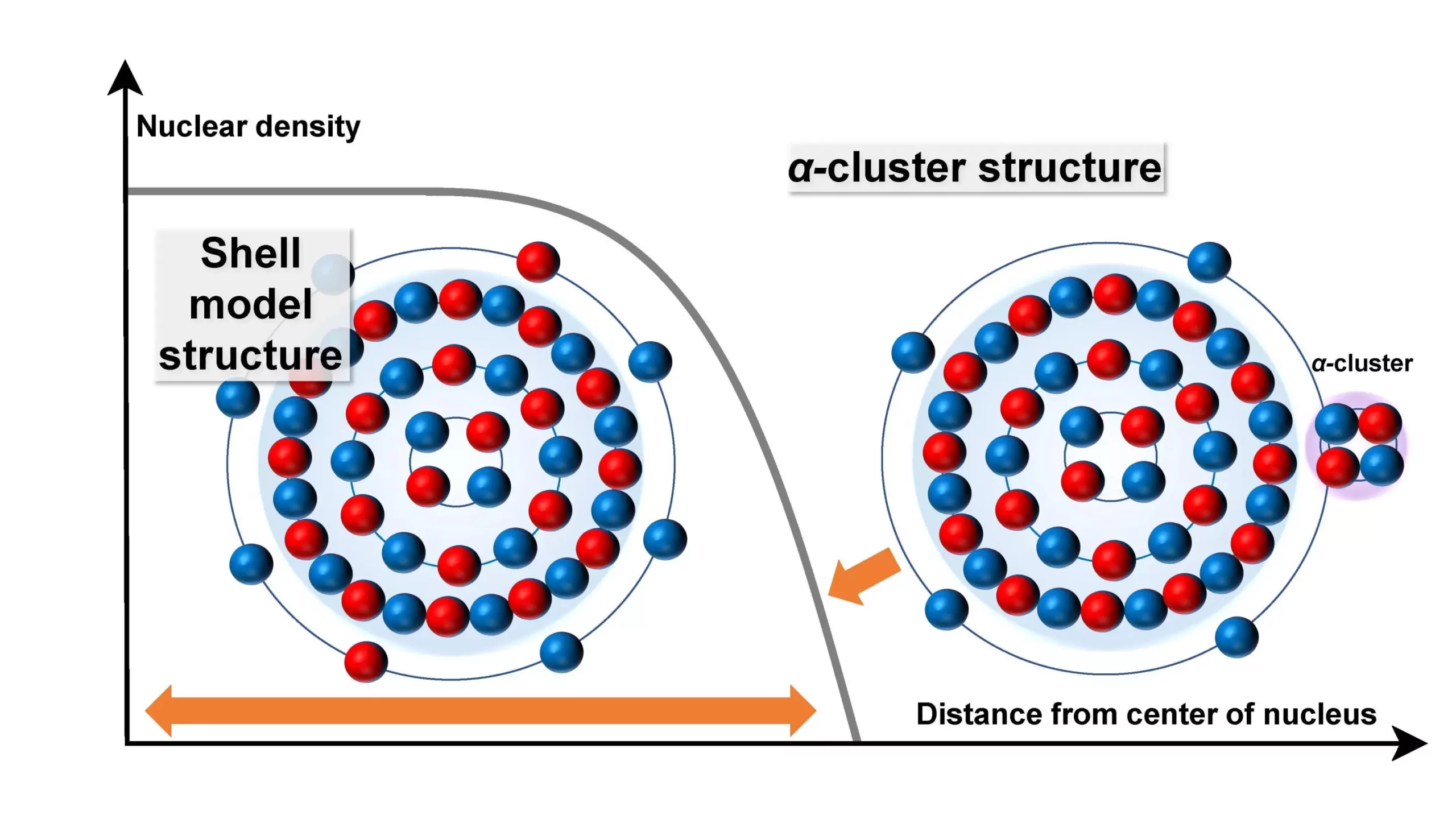In the intricate world of nuclear physics, our understanding of atomic structure is being redefined. Recent groundbreaking research from Osaka Metropolitan University brings fresh insights into the fundamental workings of titanium-48, the most prevalent isotope of titanium. This study, featured in Physical Review C, explores how the nuclear arrangement of protons and neutrons changes based on their proximity to the nucleus’s center. Such findings challenge long-standing beliefs in nuclear science, suggesting a dynamic nature to atomic structures that could reshape our comprehension of particle interactions.
The Shift from Symmetry to Asymmetry
The researchers, including graduate student Maito Okada and professors Wataru Horiuchi and Naoyuki Itagaki, undertook a comprehensive analysis to differentiate between two prominent models of nuclear structure: the shell model and the alpha-cluster model. The shell model is characterized by a symmetrical arrangement, where particles are distributed uniformly. In contrast, the alpha-cluster model presents a more complex, asymmetrical structure, reminiscent of two protons and two neutrons forming an alpha particle that exists at the outer depths of the nucleus. The practical implications of this discovery could lead to a reevaluation of fundamental principles about how atomic nuclei behave during decay processes, especially concerning alpha decay.
Methodology and Theoretical Framework
Utilizing high-energy proton collisions and alpha-particle interactions, the OMU team meticulously examined how these impacts influenced the titanium-48 structure. Their methodology hinged on the premise that proton collisions reveal characteristics of the nuclear surface, while alpha-particle collisions provide insights into the external arrangements. This dual approach offered a novel lens through which to analyze the transition between the shell model and the alpha-cluster structure, based on the distance from the nucleus’s center. Through this pioneering framework, the researchers unveiled a transformative perspective on nuclear behavior.
Implications for Nuclear Decay Understanding
The implications of this discovery are profound. Professor Horiuchi aptly noted that these groundbreaking results could illuminate the elusive mechanisms behind the alpha decay process—a mystery that has stymied physicists for nearly a century. By challenging established theories, such as the Gamow theory, this research opens new avenues for understanding the mechanics of heavy nuclei and their decay pathways. As nuclear physics continues to evolve, the questions raised by this study could lead to unforeseen advancements, elevating our understanding of atomic behavior significantly.
A Dynamic Future for Nuclear Physics
This innovative exploration into the realm of atomic structures signifies a vibrant area of study poised to influence myriad scientific domains—from material sciences to quantum mechanics. As researchers delve deeper into the complexities of atomic nuclei, they are not only reshaping our current knowledge but also paving the way for future breakthroughs. Through continued investigation and discovery, the enigmatic nature of atomic structures promises to unveil new dimensions of reality, proving once again that the universe operates under rules far beyond simple observation. The future of nuclear physics is indeed bright, and the revelations from this study are just the tip of the iceberg in understanding the intricate tapestry of matter.


Leave a Reply